 The activity program was introduced, on an experimental basis, into the public schools of the City of New York in 1935. Several different descriptive terms have been applied to this variety of “Progressive” education since. It has been called the New Education and the Experience Curriculum but we are of the opinion that the essence of the educational changes implied are best signalized by the name initially used.
The activity program was introduced, on an experimental basis, into the public schools of the City of New York in 1935. Several different descriptive terms have been applied to this variety of “Progressive” education since. It has been called the New Education and the Experience Curriculum but we are of the opinion that the essence of the educational changes implied are best signalized by the name initially used.
It was announced at the time that it would be applied only in the first three years of the elementary schools¾in nine schools, with three schools operating on the traditional curriculum used as controls. Results obtained were to be used, one against the other, in each group of schools. The plan adopted as announced was scientific.
Initial Deception
However, shortly after the plan was put into operation changes occurred. The original plan as announced of nine schools of activity program type and three schools of traditional type was not followed. Newspaper notices told us that the activity program was spreading like wildfire throughout the school system. Before long we were informed that fifty schools had adopted this activity program. It had even extended to the junior high schools. The scientific approach was abandoned. The public was informed, through the press, largely by means of the School Page in one New York newspaper that the plan was being widely accepted and widely approved by superintendents, principals and teachers. It became apparent, within a relatively brief time, that the method used to introduce the plan into our public schools was simply a device to gain initial entry. The professional spirit was strained.
The heat which was generated at conferences led to statements to teachers about their acceptance or rejection of the new program that not only militated against cool and objective experimentation but smacked of attempts to browbeat and to coerce others into approval of the activity program and of its illegal extension into grades beyond those for which provision had originally been made.
The leader of “progressive” education was Dr. John Dewey, of Teachers’ College, Columbia University. Among the followers of the movement were the Social Frontiersmen William H. Kilpatrick, John L. Childs, George S. Counts, Harold Rugg, Boyd Bode, Grayson Kefauver and others among whom was George W. Hartman, Editor of the Social Frontier, the official organ of the group at this time. These constituted the group arranging, to use the words of Dr. Counts, to “dare the teachers to build a new social order.” They were the leaders of “progressive” education which Dr. Butler, President of Columbia University, described as “Rabbit Education.” These men at Teachers’ College and the philosophy of instrumentalism, the exaggerated pragmatism of Dr. John Dewey, constitute one of the most dangerous forces in America today.
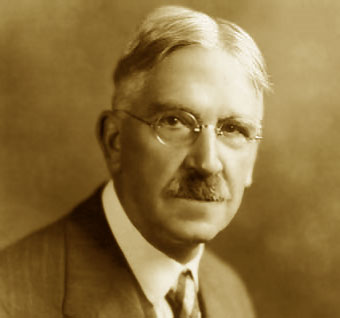
John Dewey
Dewey’s Instrumentalism
Dr. John Dewey, generally credited with being the father of “progressive” education, is usually referred to in philosophy as an instrumentalist. Though often referred to as America’s foremost philosopher he is not a genuine philosopher at all but a social
reformer and educator.
Dr. Dewey had between 1902 and 1904 been connected with Chicago University. His original ideas, which later became the keynotes of “progressive” education. were tried out in the University of Chicago’s High School. His ideas of freedom of expression led not only to retrogression in scholarship but also to bad discipline. Dr. Dewey did not remain long in Chicago. He came to New York and joined the faculty at Teachers’ College in 1904.
Dr. Dewey’s thought as an instrumentalist is that truth is a relative not an absolute matter. He asks with Pilate of old “What is truth?” He answers that historically famous question with the answer as do all instrumentalists, whose philosophy is simply that of an exaggerated pragmatism; that there is no truth; there are many truths. Truth is that which works well for an individual.
Dewey conceives of truth as working well for an individual when it helps him to do his part in an effort to bring into activity a new social order. He thinks of the teacher as his disciple Counts expressed it as one who “dares to build a new social order.”
According to Dewey schools exist for the purpose of directing pupils and students to life in a democracy. To Dewey democracy is not to be identified with our American system; it is not identical with our representative republic. Democracy to Dewey is a socialized state. Everything our forefathers did in establishing in this country a land of opportunity is to be questioned. His disciple, Harold Rugg, illustrates Dewey’s thought in his social study textbooks which are on the official supply lists of the Board of Education of the City of New York.
Dewey thinks of education as an agency of social reform. To him interest is of paramount consideration in teaching. It is only fair to Dewey to add that in a pamphlet he wrote and which was published in 1912 called “Interest as Related to Will” he emphasized the point that in learning activities in the classroom interest, while of paramount importance, must at times give place to the dull grind of effort. He stressed the point that the achievement to be desired was not alone to keep pupils happy by reason of appeal to their genuine interest but to see that they learned, that they knew, appreciated and controlled the fundamental values of life in a democratic society. With Dr. Dewey’s thought as detailed in “Interest as Related to Will” we could be in full accord provided he were in accord with what we in America regard as true democracy. Unfortunately Dr. Dewey thinks we need a new social order. He does not agree with our American notions of free enterprise. He wishes to socialize us.
Therein lies the rub. Moreover he believes the schools should be used as instruments to develop socialism in this land of opportunity. With this we most assuredly do not agree. As an educational reformer bent upon using the schools to change our concepts of American life he is equally dangerous.
From his work developed a greater emphasis upon the problematic approach to learning. Through good questioning, setting up genuine problems or even factitious ones upon which pupils, through genuine delight, would exercise their own self-activity in solving, the teaching process was made more meaningful, more alluring and more vital to pupils. It served to break down the lecture system of direct instruction which owing to the influence of Herbart had unfortunately prevailed for too long a time in some areas.
With proper control and supervision such informal education would be a most valuable supplement to the formal aspect of education which is the aspect the classroom logically presents. The classroom and the school are artificial institutions. They are not natural ones. Education received in them is formal. We are also being educated always by our many contacts with life. Such education is always informal.
It is this distinction which Dewey does not make. His effort is to informalize education. His effort is to substitute “experience curricula” for well thought-out courses of study. His effort is to have the pupils in the schools devise their own courses of study. It is because of this emphasis that there results from Dewey’s approach to formal education an exaltation of the pupil and a subordination of the teacher. The teacher is to follow “the whole child,” not to lead “the whole child.” This ridiculous extreme is an integral part of Dr. Dewey’s approach to formal education. It can not be blamed upon his followers. It became evident in his own attempt, as we have indicated, almost half a century ago personally to realize his ideas in practice.
Dr. Dewey may have been discouraged by his failure in Chicago, but he was not beaten.
He kept his idea of effecting social reforms through the schools before all who came under his influence at Teachers’ College. He built up a body of followers. In a few places his ideas were tried. They were not notably successful in America. They were seemingly, from reports received, approved in China. It was in that country that Dr. Dewey’s ideas received their most outstanding approbation until 1917 in which year Russia remodeled her whole educational system along activity program lines.
One question naturally arises. How did the Soviet Socialist Republic come under the influence of Dr. Dewey’s ideas in education? Its answer is most revealing.
 The Soviet Adopts the Activity Program
The Soviet Adopts the Activity Program
In 1917 undoubtedly at the suggestion of one of his two chief advisers, Trotsky, Lenin introduced the activity program into Russia immediately following the overthrow of Kerensky’s democratic but brief regime. Stalin who was Lenin’s second chief cabinet officer at the time voiced no objection. By governmental edicts the activity program flourished in Russia. There were those who objected but in Soviet fashion they were dealt with harshly. One of the teachers who saw the implications of the activity program was Demetri Demiaskevich. He fled Russia and came to the United States and for several years taught at the George Peabody Institute in Boston. One morning he was found dead in his room. It was with a long arm that the Soviet reached into other countries to punish her opponents. Demiaskevich while at the George Peabody Institute wrote a book called The Activity Program in Russia. In it he gives a most interesting and vivid account of the struggle that went on in Russia from 1920 to 1927 over the activity program.
Between 1920 and 1924 several leading figures in the Soviet tried to convince Lenin that the activity program was a destructive influence upon Russian youth. The Commissar of Education in 1920 presented arguments to Lenin against the new educational program. In those days Lenin believed that communism could never succeed in an agricultural country like Russia. He contended that leaders must be trained in the schools to go into industrial centers such as those in Germany, England and the United States and lead the movement to break down the capitalistic influence upon whose debris, according to Lenin, communism would rise to power.
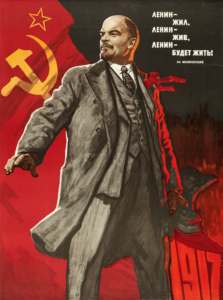 In the period between 1920 and his death in 1924 Lenin revealed by his methods that he was not aiming at the establishment of communism in Russia but a totalitarian government. He saw in the activity program a means of realizing a new social order in Russia. He saw in it a weapon which he could use to make plausible to the large population of Russia numbering 200,000,000 people among whom there were but 3,000,000 Communists that rigid controls must be inaugurated if anarchy were to be prevented. He saw in the activity program a means of breaking down among youth respect for authority. He saw in it a means of destroying true scholarship. He saw in the theory of “freedom of expression” a challenging of the authority of the teacher at school and of the parent in the home. He saw in the appeal to youth to settle their own problems, even those of love, of marriage and of sex relationships an opportunity of playing havoc with the deep religious convictions of the Russian people, indeed with all the traditions of family and social life of old Mother Russia and creating a new social atmosphere in which totalitarianism and despotic control would have a better opportunity to breathe and to grow to the full stature which he, in time, would come to enjoy. Lenin was simply putting to the test an old thought which had been well expressed long before his time: “Give me the child for eight years and I can make of him what I will.” Lenin saw in the activity program and in Dewey’s instrumentalism an opportunity not only to get control of the children through the Russian schools but also to use them for the upbuilding of otalitarian control throughout the Soviet. In his judgment of the consequences of the activity program Lenin proved himself to be a shrewd and correct planner.
In the period between 1920 and his death in 1924 Lenin revealed by his methods that he was not aiming at the establishment of communism in Russia but a totalitarian government. He saw in the activity program a means of realizing a new social order in Russia. He saw in it a weapon which he could use to make plausible to the large population of Russia numbering 200,000,000 people among whom there were but 3,000,000 Communists that rigid controls must be inaugurated if anarchy were to be prevented. He saw in the activity program a means of breaking down among youth respect for authority. He saw in it a means of destroying true scholarship. He saw in the theory of “freedom of expression” a challenging of the authority of the teacher at school and of the parent in the home. He saw in the appeal to youth to settle their own problems, even those of love, of marriage and of sex relationships an opportunity of playing havoc with the deep religious convictions of the Russian people, indeed with all the traditions of family and social life of old Mother Russia and creating a new social atmosphere in which totalitarianism and despotic control would have a better opportunity to breathe and to grow to the full stature which he, in time, would come to enjoy. Lenin was simply putting to the test an old thought which had been well expressed long before his time: “Give me the child for eight years and I can make of him what I will.” Lenin saw in the activity program and in Dewey’s instrumentalism an opportunity not only to get control of the children through the Russian schools but also to use them for the upbuilding of otalitarian control throughout the Soviet. In his judgment of the consequences of the activity program Lenin proved himself to be a shrewd and correct planner.
Death, however, came to Lenin in 1924. In the struggle for power between Trotsky and Stalin, Stalin won. Trotsky believed as Lenin did that communism could be successful only on a world wide basis. Stalin represented himself as in favor of the establishment of communism in the Soviet. Later events proved that his controlling idea was to follow Lenin’s plan in ruthless fashion and gain absolute power over Russia.
Stalin’s first reform in 1927 was to announce a five year plan. This plan included the reorganization of all governmental departments. About this time Dr. George S. Counts, Dewey’s disciple at Teachers’ College and representative of the Social Frontier groups paid a visit to Russia. Subsequently it was announced by Stalin that there would be no reorganization of the Department of Education and that the activity program would remain operative in the Russian schools. When Dr. Counts returned from Russia he brought with him specimens of textbooks used in the activity program schools of the Soviet and exhibited them at Teachers’ College where the admirers of Deweyism in education viewed them with transports of joy.
Russia Ejects Activity Program
Between 1927 and 1932, however, protests against the activity program became more pronounced in Russia. Teachers asked the authorities to view the situation realistically. College professors said that secondary school graduates were disinclined to study or to accept direction from them. Secondary school teachers said that pupils coming to them from the elementary grades were unruly, disobedient, unwilling to put forth effort of any kind unless they felt so inclined.
The New York Times published at this period a vivid account of what it called “The Migratory Children of Russia.” Wandering hordes of Soviet youth, boys and girls, became common. These youth were juvenile delinquents guilty of extreme excesses. Sexual promiscuity was common among them. Abnormality of conduct had become normality.
For the condition the activity program, aided by governmental edicts aimed at the production of a rebellious condition of thought and action among Russian youth, was held to be primarily responsible. Stalin had achieved by means of Deweyism in Russia a situation which Lenin had envisaged as possible of accomplishment by the schools when he adopted the activity program for Russia in 1917. Now the use of police methods to curb the depravity among Russian youth would be approved by all residents in the Soviet whether they were Communists or not. Now was the time to institute such curbs and to ditch the activity self-expressionism without restraint and to substitute discipline in the schools of the Soviet.
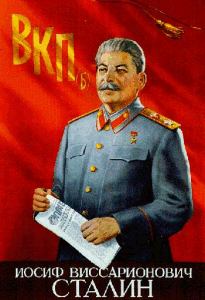 So when the Ministry of Education presented a plea for the reorganization of the educational system of the Soviet in 1932 Stalin yielded and ordered the ejection of the activity program from the schools. In the following year the “new” education as it was called was introduced. Old textbooks, specimens of which Dr. George Counts had brought to America and had lauded to the skies when the activity program was in full force in the Soviet Union, were discarded and authors became busily engaged in writing others. The “new” education was to emphasize the materialistic religion of communism. The Communist theocracy was to have four prophets, which children and youth in the schools were to recognize as sources of all authority: Marx, Engels, Lenin and Stalin. In the schools morality according to communistic standards, strong scholarship and good discipline were to be made part of the daily routine.
So when the Ministry of Education presented a plea for the reorganization of the educational system of the Soviet in 1932 Stalin yielded and ordered the ejection of the activity program from the schools. In the following year the “new” education as it was called was introduced. Old textbooks, specimens of which Dr. George Counts had brought to America and had lauded to the skies when the activity program was in full force in the Soviet Union, were discarded and authors became busily engaged in writing others. The “new” education was to emphasize the materialistic religion of communism. The Communist theocracy was to have four prophets, which children and youth in the schools were to recognize as sources of all authority: Marx, Engels, Lenin and Stalin. In the schools morality according to communistic standards, strong scholarship and good discipline were to be made part of the daily routine.
This plan for the government of the schools has been in operation from 1933 to the present day [1951]. Rigid controls are in effect. In all the textbooks absolute and undeviating loyalty to Stalin is emphasized. A picture of Stalin hangs in every classroom. It should be noted that in history we as a nation are vilified. Our past history is distorted; for instance Lincoln, the children are taught, was shot by an assassin hired by capitalists.
Between 1917 and 1932 Dr. George S. Counts made three long visits to the Soviet, traveling on one for six thousand miles by automobile throughout Russia. With Nucia P. Lodge, a research assistant at Teachers’ College, Columbia University, he translated New Russia’s Primer by M. Ilin. Mrs. Lodge, who was born in St. Petersburg, since coming to the United States has made several trips to the Soviet Union. Both Mrs. Lodge and Dr. Counts know why the activity program was introduced in all Russian elementary schools in 1917. Dr. Counts frankly told us in 1935, in an article in the New Republic that it was for political purposes. It was the means by which the teachers of the Soviet by compulsion were going, using Dr. Counts own words, to “dare build a new social order.”
The City of New York Introduces Activity Program Into Its Public Schools
In that same year, 1935, by means of the Elementary School Division of Public Schools of the City of New York at that time under Dr. Bayne’s direction, the activity program was introduced into our local schools. Dr. Counts was still the promoter of this brand of Deweyism. He was the same Dr. Counts whose article had appeared but recently in the New Republic informing us that the activity program had been introduced into the Russian schools for political reasons. To know where the support for the activity program came from in the Board of Education Mr. Marshall still a member of the Board could tell us if he would. As time went on it became clear to all reasonable people that the teachers in the public schools of the City of New York were being compelled by tyrannical and autocratic methods to use their energy “to build a new social order” by means of the activity program. The end envisaged is the same today, though the methods used are far more subtle than those employed by Dr. Bayne and Dr. Loftus, his assistant in the field.
A few years ago Dr. Dewey wrote a little book in which he rebuked the extremists who said they were his followers and told them that they were missing the main points of his philosophy. Dr. Counts in 1947 collaborating again with Mrs. Nucia P. Lodge translated and edited a part of the official text on Pedagogy written by B. P. Yesipov and N. K. Goncharov and arranged for its publication by the John Day Company of New York under the title of “I Want to be Like Stalin.” In his introduction to the translation Dr. Counts tells us that in the Soviet children are forced to realize the importance of their daily work. He emphasizes the fact that in Russia of today education is taken as a serious matter. He seemingly approves while his followers in our public schools in the City of New York still believe in keeping children happy, and who does not, even though in addition they play themselves into ignorance and in time become the victims of a “happy illiteracy.”
The Junior High Schools and Youth builders, Inc. It was in the junior high schools that the notorious Youthbuilders, Inc. flourished. Under the guise of discussion of controversial issues, the young adolescents in our junior high schools were exposed to the influence of highly trained Communists. Mrs. Sabra Halbrook, founder and Executive Director of outhbuilders. Inc. In her book Children Object announces the policy of the organization. She writes that in her opinion we should not talk to the children about the superior merit of our democracy. We should rather lead them to experiment with it.
Recently, Dr. Nathan M. Pusey, president of Lawrence College, said at a meeting in Milwaukee “Present trends in education are making people happy illiterates.” His thought is exactly descriptive of what is taking place and has been taking place for several years past in the junior high schools of the City of New York. As a high school principal in the City of New York for the past thirty years I know of these matters from my own personal experiences. Too many of the children who come, as graduates of these schools, into the senior high schools have bad scholarship records and are confirmed truants. Far too many of these boys and girls are disinclined to study, will not put forth any effort to master a problem that requires effort. They will interest themselves in nothing that does not entertain them. They recognize no rules except those that they themselves make.
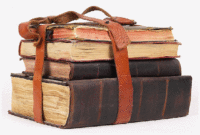 Textbooks
Textbooks
Another fact which discloses a planned effort is being made not only in the City of New York but also throughout our nation to cause a degeneration in the quality of secondary school work and to create a cynical attitude toward our American way of life, is the presence of authorized textbooks which breathe disloyalty to our nation. In California a series of history textbooks called Building America has been declared “unfit for use” in public schools because of its communistic leanings, and funds for the purchase of these books have been denied by the State legislature. There are many other textbooks, anti-American in nature, which are in the high schools of this country. Several of them have been authorized for use in the schools of the City of New York and appear on approved textbook lists. In California the committee of the State legislature which investigated the Building America Series proved that, in the main, those who supported the introduction of these books into the schools were Communists or fellow travelers. The whole question of the presence in the public schools of this country of anti-American textbooks in the subject of United States history has been well presented by the Educational Reviewer. On the radio Fulton Lewis, Jr., has exposed the situation.
Future Possibilities
All “progressive” education is dangerous. It threatens our American way of life to which our American youth should be passionately devoted. It is a way of life we wish them to be zealous to preserve, a way of life that spells opportunity to preserve the gifts to humanity of Christianity upon which all true democracy is built. These foundation stones of our American government “progressive” education would destroy. Its intent is to destroy what we have built in the western hemisphere. It is not simply a different approach to education. It is a program of destruction.
We have seen how by means of “progressive” education the youth of the Soviet was prepared for the totalitarian regime Stalin fastened upon an essentially religious people.
Those who have followed the “progressives” are apparently afraid of having the term “progressive” affixed to them. They like to call the changes they recommend in our schools the “new” education.
The use of the term “new” education in this country is interesting. The Soviet uses the term to describe her present day procedures. To her “progressive” indicates the “old” education which she discarded in 1932. Russia’s “old” is our “new” and her “new” is our “old.” What she adopted in 1917 to help her establish totalitarianism in the Soviet and discarded in 1932 when she had achieved her purposes we adopted in the City of New York in 1935 and still follow in 1951.
Original report copyright 1951 by the American Education Association. The above condensed report and edited report Copyright 2005 by Anthony J. DeBlasi, West Newfield, Maine.
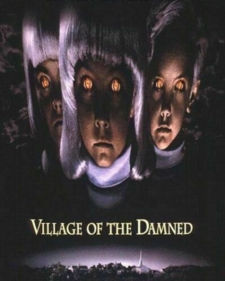 FAIR USE NOTICE: This site contains copyrighted material the use of which has not always been specifically authorized by the copyright owner. We are making such material available in our efforts to advance understanding of environmental, political, human rights, economic, democracy, scientific, and social justice issues, etc. We believe this constitutes a ‘fair use’ of any such copyrighted material as provided for in section 107 of the US Copyright Law. In accordance with Title 17 U. S. C. Section 107, the material on this site is distributed without profit to those who have expressed a prior interest in receiving the included information for research and educational purposes. For more information go to: http://www.law.cornell.edu/uscode/17/107.shtml
FAIR USE NOTICE: This site contains copyrighted material the use of which has not always been specifically authorized by the copyright owner. We are making such material available in our efforts to advance understanding of environmental, political, human rights, economic, democracy, scientific, and social justice issues, etc. We believe this constitutes a ‘fair use’ of any such copyrighted material as provided for in section 107 of the US Copyright Law. In accordance with Title 17 U. S. C. Section 107, the material on this site is distributed without profit to those who have expressed a prior interest in receiving the included information for research and educational purposes. For more information go to: http://www.law.cornell.edu/uscode/17/107.shtml

That Jesus fella said: ” Youse kin learn a LOT from the children o’ darkness”.
The initial stages of the deliberate dumbing down of America (Thank you, Charlotte Iserbyte) was done as per usual. Gradually. First, we only saw the red camel’s nose sniffing around at the edges of our educational tent. By NOW, he’s draggin’ his shaggy butt into the tent, and disrupting and contaminating ALL of the stuff, and people, that used to safely rest therein.
It’s like the wicked witch of the west said – before she and two thirds o’ the flyin’ monkeys had a “come to Truth moment”, and came over to our side – “These here now things gots to be done….., DELICATELY!”
Excellent example of persuasive writing from the Red Scare period! The author thoroughly hammers home his point: Thinking is dangerous. Only blind loyalty to MY ideology should be allowed. Any deviation from my way is to be associated with Stalin.
You rarely see this kind of writing anymore. Thanks.